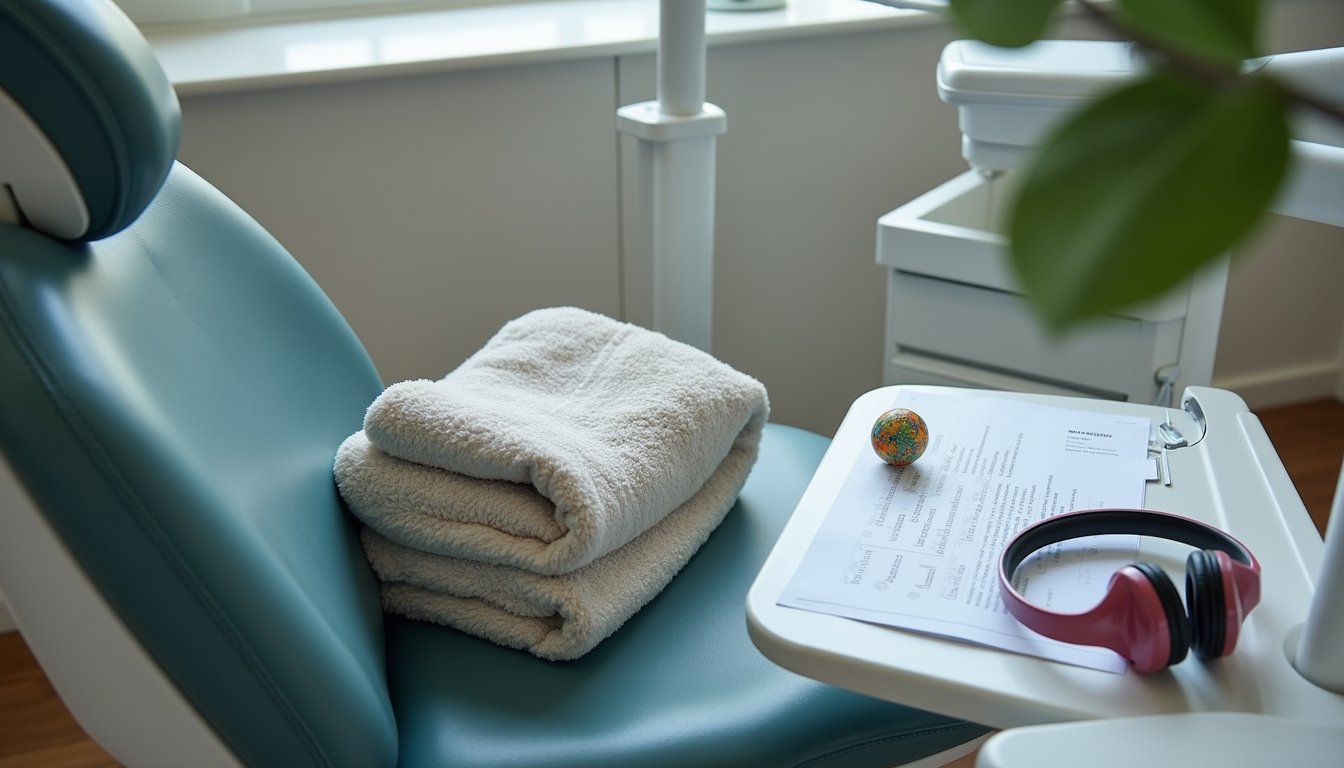Starting September 21, 2025, you’ll need to shift from audio-only telehealth to either video-based or in-person visits after six months of Suboxone treatment. You can still receive initial prescriptions via telemedicine without in-person evaluation, but you must participate in PDMP verification and maintain regular provider contact. In addition, while the X-Waiver requirement has been removed, your healthcare provider must complete specific DEA registration requirements and documentation protocols. These changes affect over 37,000 prescribing clinicians nationwide, with additional requirements you’ll want to understand.
New Audio-Only Telehealth Limitations for Suboxone

As healthcare providers prepare for significant changes in Suboxone prescribing, new audio-only telehealth regulations will take effect on March 21, 2025. You’ll be able to prescribe up to six months of medication through audio-only visits, but practitioner challenges arise after this initial period.
The Ryan Haight Act established original in-person requirements for controlled substance prescriptions before pandemic-era flexibilities were introduced. To continue prescriptions beyond September 21, 2025, you must shift patients to either in-person visits or audio-video telehealth encounters. These audio-only restrictions aim to improve patient monitoring while maintaining access to treatment. Practitioners must also review PDMP data for any controlled substances prescribed to the patient within the past year before issuing Schedule III-V controlled substances via telemedicine. The DEA estimates these changes will impact approximately 37,000 prescribing clinicians who currently provide buprenorphine treatment.
Key Changes to Telemedicine Prescribing Rules

While telemedicine regulations for Suboxone have evolved considerably, the most substantial changes affect prescribing protocols starting in 2025. Under the new permanent telemedicine flexibilities, you’ll be able to receive initial Suboxone prescriptions via telemedicine without requiring an in-person evaluation. These prescriptions can extend up to six months before an in-person visit becomes necessary.
Your provider can conduct follow-up appointments through diverse consultation methods, including telephone visits, to guarantee proper medication management. The continuity of care provisions allow for ongoing treatment monitoring and prescription renewals through telemedicine platforms. Healthcare organizations and providers have expressed significant concerns that special registration requirements could restrict access to telemedicine services. However, you’ll need to comply with both federal regulations and your state’s specific telehealth laws. These changes aim to improve treatment access while maintaining appropriate medical oversight and patient safety standards.
DEA Registration and Compliance Requirements

To prescribe Suboxone, you’ll need a valid DEA registration and must comply with the Controlled Substances Act‘s documentation requirements for Schedule III medications.
Doctors can now provide treatment through virtual appointments for patients seeking Suboxone prescriptions.
With the removal of X-Waiver requirements as of January 2023, providers no longer need special waivers to prescribe buprenorphine for opioid use disorder treatment.
The Providers Clinical Support System offers convenient online training options that fulfill the DEA registration requirements.
You must maintain accurate records of patient evaluations, treatment plans, and prescription details while checking your state’s Prescription Drug Monitoring Program (PDMP) according to local regulations.
As a DEA registrant prescribing buprenorphine, you’re required to complete 8 hours of qualifying CME training unless you meet specific exemption criteria, such as being board-certified in addiction medicine or having recent graduate status with OUD curriculum completion.
Registration Process Overview
The DEA registration process for Suboxone prescribing involves five core requirements that practitioners must fulfill. You’ll need both a conventional DEA registration and special telemedicine registration for each state where you’ll prescribe. State telemedicine eligibility must be maintained throughout your registration period.
As a clinician, you’ll submit Form 224S and pay $50 per state, while platforms face an $888 fee per state. Evidence-based studies have shown buprenorphine to be highly effective for treating opioid use disorder. Practitioners must review PDMP data before issuing any prescriptions through telemedicine encounters. Special registrants must use audio and video components during telemedicine sessions. Practitioner credentialing standards include completing 8 hours of annual CME focused on Opioid Use Disorder and safe prescribing practices. You must conduct an in-person visit after initial telemedicine prescription for buprenorphine. Under the 2025 Proposed Rule, you can prescribe Schedule III-V controlled substances via telemedicine once you’ve secured proper registration and met all training requirements.
Documentation and PDMP Rules
Successful Suboxone prescribing requires strict adherence to both PDMP monitoring and thorough documentation standards. You’ll need to check your state’s PDMP before initiating treatment and every three months thereafter. Guarantee you’ve obtained informed consent and preserve comprehensive records that comply with privacy restrictions.
| Requirement | Action Required |
|---|---|
| PDMP Checks | Pre-treatment and quarterly |
| Documentation | Patient history, treatment goals |
| Privacy | Part 2 compliance, HIPAA rules |
Your records must demonstrate DEA compliance through detailed monitoring of potential diversion and adverse effects. You’re required to maintain prescription records for 3-5 years, depending on your state’s regulations. Recollect that non-compliance with PDMP requirements can result in fines or licensing issues, so maintain audit-ready files that include verification of your DEA registration and all required patient monitoring data.
PDMP Verification Protocol Updates
Recent federal mandates have transformed PDMP verification protocols, requiring healthcare providers to conduct thorough database checks across multiple state jurisdictions before prescribing controlled substances like Suboxone. Pharmacists must verify patient identity when dispensing these medications.
You’ll need to verify PDMP records in your state, the patient’s location state, and any reciprocal jurisdictions. While PDMP exemptions exist for certain emergency situations, you’re still responsible for documenting all verification attempts. Healthcare providers must use certified health record technology when conducting PDMP queries. The new DEA rule requires providers to perform complete PDMP reviews in both the patient’s and provider’s locations.
New PDMP compliance updates indicate a phased progression toward nationwide checks within three years, though current technical limitations pose challenges.
To maintain compliance, you must navigate multiple state databases, as there’s no centralized portal yet. You’ll also need to document your PDMP review results, clinical rationale, and any identified risk factors in standardized templates that meet audit requirements.
Patient Location and State-Specific Guidelines
When prescribing Suboxone across state lines, you’ll need to verify your patient’s location and comply with both your state’s and the patient’s state’s PDMP requirements. You must check the PDMP database in your prescribing state and any supplementary states where your patient may have received controlled substances.
If you’re practicing in states with specific guidelines like South Carolina, you’ll need to guarantee your patient is enrolled in a formal MAT program before initiating telehealth prescriptions, regardless of PDMP verification status.
PDMP State Checking Requirements
Prescription drug monitoring program (PDMP) requirements vary greatly by state and patient location when prescribing Suboxone. You’ll need to conduct mandatory PDMP checks before initiating treatment, with most states requiring prior PDMP verification for all controlled substance prescriptions, including Suboxone.
For telemedicine providers, you must check the PDMP in your patient’s physical location state, not just your prescribing state. While some states like Colorado don’t mandate checks for initial prescriptions, they’re required for refills.
You’ll need to verify PDMPs every three months for ongoing therapy in most jurisdictions. Be aware that buprenorphine dispensed directly from opioid treatment programs may report to separate registries rather than PDMPs.
Special exemptions exist for emergency departments, hospice care, and cancer patients.
Cross-State Prescribing Rules
Beyond PDMP requirements, cross-state prescribing of Suboxone involves complex regulatory frameworks that vary extensively between jurisdictions. You’ll need to verify your patient’s location and comply with both federal telemedicine rules and state-specific regulations when prescribing across borders.
Interstate prescriber licensing demands careful attention, as you must maintain appropriate medical licenses for each state where you practice. Multi state prescription tracking through PDMPs is mandatory, requiring you to review records before prescribing buprenorphine. Under the DEA’s final rule, effective December 31, 2025, you can prescribe Suboxone via telemedicine, but you must adhere to state-specific requirements. Some states mandate in-person initial evaluations, while others allow virtual visits. VA practitioners receive exemptions from special registration requirements when treating veterans through VA-authorized platforms. A new three-year registration cycle has been proposed for clinicians seeking to prescribe controlled substances via telemedicine across state lines.
Timeline for Implementation and Deadlines
The implementation timeline for Suboxone prescribing rules has undergone multiple revisions since its initial announcement. Following legislative delays and an extensive regulatory review process, the final implementation date has been set for December 31, 2025. This extension allows healthcare providers to continue using current telemedicine flexibilities while adapting to new requirements. The DEA and HHS jointly announced a delay from February 18 to March 21, 2024 for initial implementation. The agencies are taking this time to thoroughly review questions of fact surrounding telemedicine prescribing practices.
Healthcare providers maintain telemedicine flexibility for Suboxone prescribing as implementation timeline extends to December 2025 amid ongoing regulatory reviews.
Key implementation milestones you’ll need to track:
- Public comment period remains open until February 28, 2025, providing an opportunity to voice concerns about the delays
- Current telemedicine waivers stay active through December 31, 2025, including audio-only prescribing for opioid use disorder treatment
- Unless further action is taken, all temporary waivers will expire on January 1, 2026, requiring compliance with new audio-video follow-up requirements and PDMP verification protocols
Pharmacist Responsibilities and Documentation
When dispensing Suboxone, pharmacists must fulfill extensive documentation and verification responsibilities that extend beyond typical prescription processing. You’ll need to verify DEA credentials, check dosage limits, and confirm patient identities while maintaining strict adherence to controlled substance regulations.
Documentation requirements include maintaining detailed dispensation logs, treatment agreements, and patient progress reports. You’re responsible for safe medication storage protocols and protecting patient privacy concerns through secure record-keeping systems. You must track inventory cautiously and document all transactions involving Schedule III substances.
Your verification duties include cross-referencing controlled substance databases, inspecting prescriptions for required elements, and ensuring proper authorization. You’ll also need to maintain communication channels with prescribers while documenting any follow-up interactions or concerns about patient compliance or potential misuse.
Video Evaluation Requirements and Expiration
Recent federal guidelines allow healthcare providers to initiate Suboxone treatment through telemedicine platforms, establishing new standards for video evaluation requirements and prescription duration limits. You’ll need to understand the appraisal process and audio-only limitations when seeking treatment.
- Your provider can prescribe Suboxone via telemedicine (audio or video) for up to six months, but must document the rationale if using audio-only sessions
- After the initial six-month period, you’ll need either video-based telemedicine or in-person evaluations to continue treatment
- Your medical records must include specific documentation regarding evaluation methods, and providers must check the prescription drug monitoring program within seven days of telemedicine encounters
Remember that while audio-only sessions are permitted initially, they can’t be used for prescription renewals beyond the six-month period.
Long-Term Treatment Access and Continuity
To maintain long-term Suboxone treatment, you’ll need regular in-person follow-up appointments with your provider, even if you initially started treatment through video evaluations. Your provider must shift you from telehealth to in-person care within a specified timeframe, typically 30-60 days, depending on state regulations and clinical factors.
You’ll work with your healthcare team to establish a monitoring schedule that safeguards treatment continuity while meeting both federal and state requirements for ongoing Suboxone maintenance therapy.
In-Person Follow-Up Requirements
Under current federal regulations, patients seeking long-term Suboxone treatment must navigate a two-phase system that combines initial telehealth flexibility with subsequent in-person requirements. While you’ll have access to remote prescriptions during your first six months, continuing treatment beyond this period requires physical evaluations to ascertain safety and compliance.
Your provider must meet these essential requirements:
- Verify your identity through government-issued ID or approved alternatives
- Complete necessary provider training requirements before prescribing Suboxone
- Document medication pickup options and coordinate with authorized pharmacies for dispensing
In-person follow-ups after the initial six-month period can occur through direct office visits, certified OTP facilities, or approved alternative mechanisms. You’ll need to comply with state-specific PDMP checks and may face restrictions on remote pharmacy dispensing.
Video Evaluation Transition Period
Building on the established in-person requirements, federal regulations now provide a structured pathway for video-based evaluations during long-term Suboxone treatment. The new shift protocols require real-time audiovisual interaction between you and your provider after the initial six-month audio-only period.
These video evaluations strengthen provider-patient relationships while ensuring continuous care access. You’ll need to participate in either video-based or in-person assessments with your prescribing physician to maintain your treatment plan. The transitional period helps establish a more inclusive care model while maintaining medication accessibility.
Your provider will evaluate your individual risk factors to determine the most appropriate long-term treatment format. This approach balances the convenience of remote care with the clinical oversight necessary for successful recovery maintenance.
Special Registration Process for Practitioners
Practitioners seeking Special Registration to prescribe controlled substances via telemedicine must navigate a detailed application process through the DEA. You’ll need to complete Form 224S and secure reciprocal state registrations for each jurisdiction where you’ll prescribe. Multi-state prescribing challenges require careful attention to local telemedicine laws and controlled substance regulations.
Key steps in the registration process include:
- Demonstrating valid DEA registration with Schedule III authority for buprenorphine
- Providing legitimate need justification for specific controlled substance schedules
- Affirming completion of required training through DEA registration documentation
The process distinguishes between practitioner and platform registrations, with specific requirements for each type. If you’re operating under a hospital or clinic’s DEA registration, you may qualify for exemption from additional training requirements unless otherwise mandated by state law.
Frequently Asked Questions
Can Minors Receive Suboxone Prescriptions Through Telemedicine Services?
Yes, you can receive Suboxone prescriptions as a minor through telemedicine, as it’s a Schedule III medication that doesn’t require parental presence during virtual visits. However, provider licensing regulations mandate that your prescriber must have both DEA telemedicine registration and state-specific credentials where you reside.
While parental consent requirements vary by state, they’re generally less stringent for Suboxone compared to Schedule II medications. Your provider must still verify legitimate medical need.
What Happens if a Patient Loses or Damages Their Suboxone Prescription?
If you lose or damage your prescription, you’ll need to immediately contact your healthcare provider to report the incident. Due to strict DEA regulations, you typically can’t get a replacement without an in-person visit.
You should document the loss and may need a police report if theft occurred. For accessing emergency supply, you’ll likely need to pay out-of-pocket since insurance rarely covers replacement prescriptions. Always maintain detailed records of any incidents.
Are There Specific Dosage Limitations for First-Time Suboxone Prescriptions?
Yes, you’ll face specific dosage limitations for your initial Suboxone prescription. Your doctor will start you on a lower dose during induction, typically 2-4 mg on day one, with a maximum of 8 mg total for that first day.
During induction, you’ll receive doses in 2-4 mg increments at 2-hour intervals. Your prescription duration will likely be shorter initially, allowing your healthcare provider to monitor your response and adjust treatment accordingly.
How Often Can Patients Request Early Refills of Suboxone?
You can’t request early refills frequently for controlled medications like Suboxone. Federal regulations require you to use at least 85% of your current prescription duration before qualifying for a refill.
While individual cases may warrant exceptions, multiple early refill requests can trigger increased monitoring. Your refill frequency is strictly limited to 5 refills within a 6-month period, and some states enforce even tighter restrictions like 120-day total limits.
Do Insurance Companies Cover Telemedicine-Prescribed Suboxone the Same as In-Person Prescriptions?
Yes, most insurance companies cover Suboxone prescribed through telemedicine the same way they cover in-person prescriptions. You’ll find that major insurers, including Medicare and private plans, treat online treatment options identically as long as your provider meets necessary qualifications.
Your copays and deductibles typically remain the same regardless of prescription method. The main exception might be during initial prescriptions, where some insurers require in-person visits before switching to remote healthcare services.
















